
Qi Chen - Invited Speaker
Assistant Professor, Peking University
Dr. Qi Chen earned her Ph.D. from Harvard University where she worked on chamber and field studies of the formation of biogenic secondary organic aerosol. She was a postdoctoral scholar at MIT from 2012 to 2014. At MIT, she developed a model framework to simulate the elemental composition of organic aerosol for GEOS-Chem. She became a faculty at Peking University (PKU) in September 2014 and started to lead a mobile laboratory and a roof site with advanced online mass spectrometers. Her current research focuses on field studies and modeling of organic aerosol in polluted urban environments.
Principle Presentation: Process-based and Observation-constrained SOA Simulations in China: The Role of Semivolatile and Intermediate-Volatility Organic Compounds and OH Levels

Jeffrey Curtis
Postdoctoral Research Associate, University of Illinois at Urbana-Champaign
Jeffrey Curtis is a Postdoctoral Research Associate at the University of Illinois at Urbana-Champaign, working with Nicole Riemer and Matt West. He has received a MS degree in Computational Science and a PhD in Atmospheric Sciences. Among his research interests are quantifying errors due to aerosol representation in regional and global models, determining the importance of representing aerosol mixing state in large-scale models and developing numerical methods.
Principle Presentation: A 3D particle-resolved model (WRF-PartMC) for quantifying structural uncertainties in a modal model (MAM3) on the regional scale

Emily de Jong
Graduate Student, California Institute of Technology
Emily is a third-year graduate student in Mechanical Engineering at Caltech, where she researches atmospheric microphysics modeling with Professor Tapio Schneider and Professor John Seinfeld. After obtaining her B.S.E. in Chemical Engineering from Princeton University in 2019, Emily found her way into the atmospheric sciences through her interest in fluid dynamics. When she is not modeling clouds and aerosols, Emily can be found doing "observational field work"--that is, marveling at the sky while out hiking or riding her bike.
Principle Presentation: Droplet Breakup for the Super-Droplet Method

Maegan DeLessio
PhD Student, Columbia University
Maegan DeLessio is currently a PhD student in the Department of Earth and Environmental Sciences at Columbia University. Maegan is working at NASA GISS to model atmospheric brown carbon. She is interested in studying the global distribution and magnitude of brown carbon direct radiative forcing.
Lightning Talk Presentation: Modeling atmospheric brown carbon in the GISS ModelE Earth system model

Jonas Elm
Assistant Professor, Aarhus University
Jonas Elm received a PhD degree in theoretical chemistry from the University of Copenhagen (2014) working with computational modelling of atmospheric molecular clusters under the supervision of Prof. Kurt V. Mikkelsen and Merete Bilde. In 2014 he joined as a postdoc in the center for exploitation of solar energy at Copenhagen University, where he computationally screened for new target photoswitch molecules for application as solar heat batteries. In 2015 he joined the group of Prof. Hanna Vehkamäki at the University of Helsinki, where he was working as a postdoc modelling atmospheric new particle formation using quantum chemical methods. In 2017 he started a postdoc position at Aarhus University working with Prof. Merete Bilde modelling iodine reaction kinetics. In 2020 he was employed as an assistant professor at Aarhus University to initiate an independent research group. In his current work he is generally striving towards developing a unified atmospheric new particle formation model using a combination of quantum chemical calculations and machine learning.
Principle Presentation: A Quantum Machine Learning Approach for Studying Atmospheric Molecular Cluster Formation

Miriam Arak Freedman - Invited Speaker
Associate Professor, Pennsylvania State University
Miriam Freedman has degrees from Swarthmore College (BA, 2000), the University of Minnesota (MS Mathematics, 2002), and the University of Chicago (PhD Chemistry, 2008), as well as postdoctoral training at the University of Colorado. Miriam began her independent career at the Pennsylvania State University in 2010, where she is currently has the rank of Professor. Her research group studies phase transitions of aerosol particles, ice nucleation, and other topics at the interface of physical chemistry, surface science, and atmospheric chemistry. She received an NSF CAREER award in 2014, the Eberly College of Science 2019 Dean’s Climate & Diversity Award, and the 2021 ACS Physical Chemistry Division Early Career Award in Experimental Physical Chemistry.
Principle Presentation: Liquid-liquid phase separation in submicron aerosol

Tommaso Galeazzo
Postdoctoral Research Scholar, University of California, Irvine
Postdoctoral research scholar at the University of California - Irvine working at the intersection of atmospheric chemistry, artificial intelligence and cheminformatics. Responsible for the development of the viscosity parametrisation and modules of GECKO-A. Current investigations focus on chemical kinetics, Artificial Intelligence (AI) driven Quantitative Structural Activity Relationships (QSAR) models , applications of Natural Language Processing (NLP) techniques and statistics to chemical mechanisms modelling, development and deployment of AI chemical models into software. Personal website: www.tmsglz.com
Principle Presentation: Predicting Glass Transition Temperature and Viscosity of Organic Molecules via Machine Learning and Molecular Embeddings

Paula Harder
PhD Student, Fraunhofer Institute ITWM
Paula Harder is a Computer Science Ph.D. student at the University at Kaiserslautern and works with the Fraunhofer Institute for Industrial Mathematics and the Climate Processes group at University of Oxford on how to speed-up aerosol modelling with Machine Learning. Her research interests are robustness in Deep Learning and applications of different ML techniques to Climate, Earth and Space Science. She holds a master's degree in mathematics from the University of Tübingen.
Principle Presentation: Emulating an Aerosol Microphysics Model with Deep Learning

Charles He
PhD Candidate, Colorado State University
Charles is a third-year PhD student from Dr. Shantanu Jathar's research group at Colorado State University. His research is focused on studying SOA formation in lab experiments and understanding SOA-related physical/chemical processes through computational modeling. He previously gained Bachelor's (Mech. E.) and Master's degrees (Env. E.) from Carnegie Mellon University.
Principle Presentation: Process-Level Modeling Can Simultaneously Explain Secondary Organic Aerosol Evolution in Chambers and Flow Reactors

Lin He
Post-doctoral fellow, The Leibniz Institute for Tropospheric Research (TROPOS)
Lin He is a post-doctoral researcher at the Atmospheric Chemistry Department (ACD) of the Leibniz Institute for Tropospheric Research (TROPOS) in Germany. He worked on the atmospheric aqueous-phase kinetics and developed an explicit aqueous-phase chemical mechanism of the oxidation of biomass burning tracers. In his current work he is simulating the SOA formation from residential wood burning or wildfire using a box model.
Principle Presentation: Modeling the Tropospheric Multiphase Chemistry of Biomass Burning Trace Compounds Using the Chemical Aqueous Phase Radical Mechanism (CAPRAM)

Daven Henze - 2021 Keynote Speaker
Associate Professor, University of Colorado, Boulder
Dr. Daven Henze is a Professor and the S. P. Chip and Lori Johnson Faculty Fellow in the Department of Mechanical Engineering at the University of Colorado Boulder, and an Adjunct Senior Research Scientist at the Lamont-Doherty Earth Observatory of Columbia University. He holds a Ph.D. in chemical engineering from Caltech. Prior to joining the faculty at CU Boulder he was an Earth Institute Postdoctoral Fellow at Columbia University, where he worked at the NASA Goddard Institute for Space Studies. Dr. Henze’s research focuses on air quality, long-range pollution transport, and climate change. A large part of his research stems from chemical data assimilation, the process by which both models and observations are combined to produce estimates of the atmospheric state that are often more complete than those provided by either approach alone. This encompasses more specific interests in remote sensing, adjoint sensitivity analysis, inverse problems, and source apportionment. Dr. Henze has received an EPA Early Career award, a NASA New Investigator award, and several university awards for teaching and research. He is the lead scientist for the GEOS-Chem adjoint model, a member of the GEOS-Chem Steering Committee, a member of the NASA Earth Science Advisory Committee as well as multiple NASA satellite science teams, and was a member of the EPA Clean Air Scientific Advisory Committee (CASAC) on secondary SOx/NOx standards.
Keynote Presentation: Reduction of large datasets and expensive air quality model calculations through statistical analysis and machine learning.
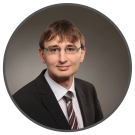
Erik Hoffmann
Post Doctoral Researcher, Leibniz Institute for Tropospheric Research
Erik Hoffmann is a Postdoc at the Atmospheric Chemistry Department (ACD) of the Leibniz Institute for Tropospheric Research (TROPOS) in Leipzig. He holds a PhD at the University of Leipzig. His research focuses on: modeling the marine multiphase chemistry in clean and polluted marine environments, developing of multiphase chemistry mechanisms, application of box modeling to understand field measurements and implementation of reduced multiphase chemistry mechanisms into the chemical transport model COSMO-MUSCAT.
Principle Presentation: Multiphase chemistry within Arctic fog droplets explains unexpected growth of Aitken mode particles to CCN sizes

Hannah Horowitz
Assistant Professor, University of Illinois at Urbana-Champaign
Dr. Hannah M. Horowitz joined the CEE department at UIUC as an Assistant Professor in January 2020. She is also an Affiliate Professor in Atmospheric Sciences. Her research focuses on the interactions between human activity, atmospheric chemistry, climate, and pollution, through developing and applying global models. Previously, she was an NSF Atmosphere and Geospace Sciences Postdoctoral Research Fellow and Joint Institute for the Study of the Atmosphere and Ocean (JISAO) Postdoctoral Fellow at the University of Washington. She received her Ph.D. in Earth and Planetary Sciences and M.S. in Environmental Science and Engineering from Harvard University.
Principle Presentation: Estimating emissions of sea salt aerosols in polar regions using satellite data and chemical transport modeling

Su-Gwang Jeong
Assistant Professor, Soongsil University
Dr. Su-Gwang Jeong is Assistant Professor in School of Architecture, College of Engineering, Soongsil University, Seoul, Korea. He was with the Architectural Engineering Department, Pennsylvania State University, PA, USA as a Visiting Scholar in JAN 2018 and DEC 2019. He received the Ph.D. degree in Architectural Engineering from Soongsil University, Seoul, Korea in 2017 under the supervision of Prof. Sumin Kim, where he was a member of the Building Environment and Materials Lab.
Dr. Su-Gwang Jeong focus on Building Energy, Eco-friendly materials, Phase change material, Indoor air for reducing building energy consumption and improving building environment. Also, he has been a special issue guest editor of Processes. He has published over 50 research papers(SCI and domestic) with his colleagues.
Principle Presentation: Modeling the indoor ultrafine particle dynamics for indoor episodic emission sources considering coagulation effect

Jia Jiang
Graduate Student Researcher, University of California, Riverside
Jia Jiang is currently a PhD candidate at the University of California, Riverside. Jia Jiang's research focuses on the atmospheric reactions of volatile organic compounds (VOCs). This includes developing gas-phase chemical mechanisms for furans, oxygenated aromatics, and monoterpenes, evaluating these mechanisms using environmental chamber data, and implementing new mechanisms into fire plume and air quality modeling systems. Jia Jiang's research interest also includes mechanistic studies of secondary organic aerosol (SOA) formation using chemically-detailed box models.
Principle Presentation: Modeling the Role of Peroxy Radicals in Camphene Secondary Organic Aerosol Formation
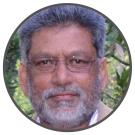
Ajith Kaduwela
Senior Staff Scientist, California Air Resources Board
Professional Research Scientist, UC Davis, Air Quality Research Center
Ajith holds a B.S. degree in chemistry and mathematics and a Ph.D. in chemical physics. Prior to joining ARB he was a researcher at the Lawrence Berkeley National Laboratory and the Department of Physics, University of California at Davis. He has authored over seventy publications in peer-reviewed scientific journals on various aspects of computational chemistry and physics. His current research focuses on atmospheric chemical mechanisms for regulatory applications and low-cost air sensors.
Principle Presentation: Investigating Wildfire Plumes with low-cost air sensors: Implications for grid-based photochemical Air Quality modeling

Liviana Klein
PhD Candidate, ETH Zurich
Liviana Klein is currently a PhD candidate at the Institute for Atmospheric and Climate Science at ETH Zurich in Switzerland. She is part of the Singergia project "Infectivity of influenza viruses in expiratory aerosols under ambient temperature and humidities". Her research focuses on the drying kinetics of expiratory aerosol particles during exhalation to model SARS-CoV-2 and Influenza virus infectivity.
Principle Presentation: Exhalation kinetics of surrogate lung fluid particles using experiments and process modelling

Chenxi Li - Invited Speaker
Assistant Professor, Shanghai Jiao Tong University
Chenxi Li received a BEng in Engineering Physics at Tsinghua university. He obtained his PhD at the University of Minnesota in mechanical engineering and worked with Ruth Signorell (ETH Zurich) as a postdoc. His research interest mainly lies in gas phase nucleation and particle growth, aerosol system dynamics, and analytical techniques including ion-mobility-mass spectrometry. Presently, he is an assistant professor in the department of Environmental Science and Engineering in Shanghai Jiao Tong University.
Principle Presentation: Understanding nucleation and initial particle growth in binary vapors with controlled Laval expansion

Yumin Li
PhD student, School of Environmental Sciences and Engineering, Southern University of Science and Technology, Shenzhen, Guangdong Province, China
Li Yumin from Profs. Tzung-May Fu's group is a phD student in the joint program between the Southern University of Science and Technology and the Hong Kong University of Science and Technology. She got her bachelor's degree in Southern University of Science and Technology. Her research interests include sources, chemical processes, sinks, and environment impacts of key components in atmospheric organic aerosols.
Principle Presentation: Global budget of atmospheric organic nitrogen aerosols and implications for nitrogen deposition

Joseph Lilek
MSc Student, McGill University
Joe is an MSc student at McGill University, where he works with Prof. Andreas Zuend. Joe's research involves the development of improved viscosity models for aerosol mixtures, with a focus on the viscosity contribution of inorganic salts. He received his Bachelor of Science in Atmospheric Science from the University of Kansas, where he graduated with departmental honors and was recognized as Outstanding Senior. While at Kansas, he also completed a theatre minor, and he continues to act and direct with local theatre groups. Before attending McGill, Joe worked for three years in science communication and outreach.
Lightning Talk Presentation: A predictive viscosity model for aqueous electrolytes and mixed organic-inorganic aerosol phases

Jiachen Liu
Research Assistant, Drexel University
Jiachen Liu is a first-year graduate student working with Dr. Shannon Capps at Drexel University. Jiachen is broadly interested in atmospheric modeling and sensitivity analysis. Jiachen's work focuses on implementing novel sensitivity analysis approach to chemical transport models.
Lightning Talk Presentation: Leveraging novel higher-order sensitivity analysis to assess the predictability of background SOA concentrations with a state-of-the-science aerosol mechanism

Dana McGuffin
Postdoctoral Researcher, Lawrence Livermore National Laboratory
Dana McGuffin is a postdoctoral researcher at Lawrence Livermore National Laboratory after completing her PhD at Carnegie Mellon University in 2020. Her research interest is in improving the modeling capabilities of atmospheric aerosol microphysics in regional and global models. Currently, she is modeling microphysics that form local and global fallout following a nuclear detonation.
Principle Presentation: Super-droplet Method to Simulate Lagrangian Microphysics of Fallout Particles

Robert McGraw
Senior Scientist, Brookhaven National Laboratory
McGraw has a long-standing interest in the homogeneous and heterogeneous nucleation of supercooled vapors, as mechanisms for gas-to-particle conversion. This interest began during his postdoctoral collaboration with Prof. Howard Reiss at UCLA, and continued at Brookhaven both during the early eighties and since returning to BNL in 1993. Since returning, he has been Principal Investigator for NASA programs investigating nucleation and growth processes of atmospheric aerosols and clouds and for development of MATRIX, an aerosol module currently being used in the NASA/GISS climate model. Major achievements under these programs included development of the quadrature method of moments for simulation of atmospheric aerosol processes; completion of the first rigorous kinetics study of binary nucleation in sulfuric acid-water mixtures; and an investigation into the role of fluctuations, temperature, and detailed balance in nucleation theory. In addition to NASA, he has served as Principal Investigator on a DOE/EERE program, Diesel Engine Emissions Reduction (DEER), along with programs from the NNSA and DOE/SciDAC. His current research focus is on the DOE ARM and ASR climate science programs.
Principle Presentation: Reduction of numerical diffusion in linear advection schemes with application to Eulerian transport models

V. Faye McNeill
Professor, Columbia University
V. Faye McNeill is a Professor in the Department of Chemical Engineering and the Department of Earth and Environmental Sciences at Columbia University. She is also an associate member of the Earth Institute Faculty and Principal Investigator of the Columbia University Clean Air Toolbox for Cities Initiative. She joined Columbia in 2007 and received tenure in 2014. She received her B.S. in Ch.E. from Caltech in 1999 and her PhD in Ch.E. from MIT in 2005, where she was a NASA Earth System Science Fellow. From 2005-2007 she was a postdoctoral scholar at the University of Washington Department of Atmospheric Sciences. She received the NSF CAREER and the ACS Petroleum Research Fund Doctoral New Investigator awards in 2009. She was the recipient of the Kenneth T. Whitby Award of AAAR in 2015 and the Mellichamp Emerging Leaders lecturer at UCSB in 2018. She is the Associate Editor in charge of Atmospheric Chemistry for ACS Earth and Space Chemistry. She was a co-editor of Atmospheric Chemistry and Physics from 2007-2017. She has served in multiple elected officer positions in AIChE, AAAR, and AGU. She is an appointed member of the IUPAC panel on kinetic data evaluation and the ACS Committee on Environmental Improvement. She is co-chair of this year's IAMA conference.
Principle Presentation: Lab-to-environment modeling for bridging scales in atmospheric chemistry

Ruqian Miao
Ph.D. candidate, Peking University
Ruqian Miao is currently a PhD candidate from Dr. Qi Chen’s group at Peking University. She received her Bachelor's degree in Environmental Sciences from Nankai University in 2016. Her research focuses on regional and global modeling of fine particles and oxidants, particularly in polluted urban environment.
Lightning Talk Presentation: Estimating size-specific particulate matter exposure in China based on machine learning parameterizations

Loretta Mickley - Invited Speaker
Senior Research Fellow, Harvard University
Loretta J. Mickley investigates chemistry-climate interactions in the troposphere. Her team at Harvard seeks to understand how short-lived gases and particles affect climate and how climate, in turn, influences atmospheric composition. Key topics include (1) effects of climate change on urban smog, dust, and wildfires, (2) the impact of aerosols on regional climate, and (3) atmospheric chemistry during the preindustrial era and the last glacial period. Much of Dr. Mickley's recent research focuses on the drivers of wildfires and the consequences of the smoke from fires on air quality and human health.
Principle Presentation: Challenges in modeling emissions from fires in the past, present-day, and future

Marcel Müller
PhD Candidate, ETH Zurich
Marcel received his BSc (2017) and MSc (2019) in chemistry at ETH Zurich and subsequently joined the Atmospheric Chemistry group at the Institute for Atmospheric and Climate Science at ETH Zurich as a PhD student. In his PhD project, he studies electrodynamically levitated droplets undergoing heterogeneous reactions using mass spectrometry. Consequently, he is also interested in aspects of aerosol process modelling.
Lightning Talk Presentation: Accelerating multiphase-chemical kinetics modelling through machine learning metamodels

Nanna Myllys
Postdoc, Jyväskylä University
Nanna Myllys received BSc, MSc and PhD degrees from the University of Helsinki. In 2018, Nanna obtained a fellowship to become a postdoctoral researcher in the University of California, Irvine, and in 2021, moved to the University of Jyväskylä. Nanna is a theoretical chemist studying clustering, reaction mechanisms and particle properties. The main research focuses on the development of a reactive cluster formation and growth models based on the first principles as well as spectroscopical approaches to study atmospheric complexes.
Principle Presentation: A general parametrization for salt nanoparticle formation

Ivo Neefjes
Doctoral student, Institute for atmospheric and earth system research, University of Helsinki, Finland
Ivo Neefjes graduated from the KU Leuven with a Bachelor in Chemistry Summa Cum Laude in 2017 and an Erasmus Mundus Master in Theoretical Chemistry and Computational Modelling Summa Cum Laude with congratulations from the board of examiners in 2019. Mr. Neefjes currently works as a doctoral student in the computational aerosol physics group of the University of Helsinki. His research is focused on the development of theoretical models to predict fundamental properties of chemical systems. He is currently working on a model to determine the fate of atmospheric clusters inside mass spectrometers.
Principle Presentation: Identification of environmentally relevant isomers based on computational ion mobility predictions
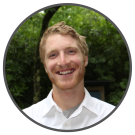
Samuel O'Donnell
Graduate Research Assistant, Colorado State University
Samuel O'Donnell is a graduate student in Jeffrey Pierce's group at Colorado State University. He holds a B.S. in Atmospheric Science from the University of North Carolina at Asheville, and he is currently working on modeling new particle formation.
Lightning Talk Presentation: Process level modeling of vertically resolved new-particle formation at the Southern Great Plains observatory

Daniel (Danny) O'Sullivan
PhD Student, Imperial College London, Dep. of Mechanical Engineering
Graduated from Imperial College London in 2019, 1st in Mechanical Engineering (MEng). Started PhD in Oct 2019 with Dr Stelios Rigopoulos investigating Population Balance modelling of aerosols and flames with focus on soot - at Imperial College London Dep. of Mechanical Engineering
Principle Presentation: A Conservative Finite Volume Framework and Implementation for Aggregation, Breakage and Growth Problems on Arbitrary Grids.
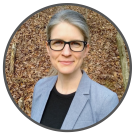
Havala Pye
Research Scientist, US Environmental Protection Agency
Dr. Pye is a research scientist in the US EPA Office of Research and Development where she uses computer models to understand what governs chemicals in air: from emissions through chemical and physical transformation and ultimately removal. Most of her work focuses on particles which can have negative impacts on health. Dr. Pye is a recipient of a Presidential Early Career Award for Scientists and Engineers, the highest honor bestowed by the U.S. government on outstanding scientists and engineers beginning their independent careers. Dr. Pye received her PhD in 2011 in Chemical Engineering with a minor in Environmental Science and Engineering from the California Institute of Technology. More information about her work is available at https://havalapye.wordpress.com/.
Principle Presentation: Integrating reactive organic carbon emissions into the Community Regional Atmospheric Chemistry Multiphase Mechanism (CRACMM)

Leighton Regayre
Senior Research Fellow, University of Leeds
I'm currently conducting research as part of the FORCeS project which will constrain aerosol effective radiative forcing and deliver improved climate projections. We will sample model uncertainty in multiple processes that affect aerosols, clouds, radiaiton and their interactions, then reduce that uncertainty using process-based observational constraints. Within the NERC-funded ACURE project, led by Prof Ken Carslaw, we tackled the aerosol forcing uncertainty through a comprehensive synthesis of aerosol, cloud and atmospheric radiation measurements, combined with innovative ways to analyse global model uncertainty. We produced a large set of model variants (a perturbed parameter ensemble, or PPE) that spans the uncertainty in multiple model parameters. Advanced statistical methods were used to generate essentially millions of model simulations that enable the full uncertainty of the model to be explored. The spread of these simulations were then be narrowed by comparing the simulated aerosols, clouds and aerosol-cloud relationships against extensive measurements. Yet, substantial uncertainty remains. Within FORCeS we will strategically constrain the remaining uncertainty using a suite of observations informed by our understanding of the climate system.
Principle Presentation: Aerosol parameter value tuning within an uncertainty framework

Bernhard Reischl
University Researcher, Docent, Institute for Atmospheric and Earth System Research / Physics, University of Helsinki
Bernhard is a computational physicist with a background in computational statistical mechanics and materials science. He is a University Researcher in the computational aerosol physics group at the University of Helsinki, investigating collisions of atmospheric molecules and clusters, homogeneous nucleation, as well as heterogeneous ice nucleation, by means of molecular dynamics simulations and free energy calculations.
Principle Presentation: Atomistic molecular dynamics simulations of ion-dipole collisions in the atmosphere

Nicole Riemer
Professor, University of Illinois at Urbana-Champaign
Nicole Riemer is a Professor at the Department of Atmospheric Sciences and an Affiliate of the Department of Civil and Environmental Engineering at the University of Illinois at Urbana-Champaign. She received her Doctorate degree in Meteorology from the University of Karlsruhe, Germany. Her research focus is the development of computer simulations that describe how aerosol particles are created, transported, and transformed in the atmosphere. Her group uses these simulations, together with observational and satellite data, to understand how aerosol particles impact human health, weather, and climate.
Principle Presentation: Chemistry Across Multiple Phases (CAMP): An integrated multi-phase chemistry model

Pontus Roldin - Invited Speaker
Associate Professor in Physics at Lund University
After completing his PhD in 2013 at Lund University he spent 3-years (2014-2016) as a postdoc fellow at the Institute of Atmospheric and Earth System Research (INAR) at University of Helsinki. His research focuses on process model development within the fields of secondary aerosol formation, new particle formation and atmospheric multiphase chemistry. The purpose with his research is often to understand the exact mechanism behind observations of aerosol particles in the atmosphere and during controlled laboratory smog chamber experiments.
During recent years his research interests has been to understand the formation of highly oxygenated organic molecules (HOMs) and how HOM contributes to the growth and properties of secondary organic aerosols.
Principle Presentation: Modelling new particle formation, secondary aerosol dynamics and aerosol phase-state highlighting the key role of peroxy radical autoxidation

Manoranjan Sahu
Assistant Professor, Indian Institute of Technology Bombay
Manoranjan Sahu is an Assistant Professor at IIT Bombay. He received his M.S & PhD in Energy, Environmental and Chemical Engineering from Washington University and worked several years in various chemical/renewable energy Industry before joining as a faculty at IIT Bombay. His research focus is on the development of air pollution control technology, aerosol technology for nanomaterial synthesis, air quality monitoring and modelling. His group focuses on low cost sensor application, development of ML algorithms for sensor calibration and source apportionment, Nanoparticle applications and development of air pollution control technology for particulate matter.
Principle Presentation: Machine Learning (ML) Clustering Algorithms as a Receptor Modelling Technique for Source Apportionment of Particulate Matter

Meredith Schervish - Invited Speaker
Doctoral Student, Carnegie Mellon University, Department of Chemistry
Meredith received her PhD in chemistry from Carnegie Mellon University. There she studied the gas-phase oxidation chemistry that transforms volatile emissions into species that will nucleate and grow new particles. Her work focused on modeling chamber experiments to elucidate the kinetics of this chemistry and connect experiments to the real atmosphere.
Principle Presentation: Suppression of nucleation and growth of alpha-pinene oxidation products due to isoprene

Saif Shahrukh
Graduate Student, University Of Dhaka
Saif Shahrukh completed his Bachelor of Science in Soil, Water & Environment and Master of Science in Environment from the Department of Soil, Water and Environment, University of Dhaka, Bangladesh. Saif Shahrukh currently works at the Department of Soil, Water and Environment, University of Dhaka as a Graduate Research Assistant. His current research includes particulate matter, airborne microplastics, air quality monitoring, urban forestry, plant ecology, nature-based solution, and the mitigative approaches to airborne particulate.
Lightning Talk Presentation 1: Assessment of Air Pollution Tolerance, Anticipated Performance, and Metal Accumulation Indices: Implications for Roadside Planting for Improving the Quality of Urban Air
Lightning Talk Presentation 2: Capturing of Particulate Matter from Ambient Air by Four Evergreen Tree Species in Dhaka, Bangladesh

Sam Silva - Invited Speaker
Global Atmospheric Modeling Pauling Fellow, Pacific Northwest National Laboratory
Sam Silva is a research scientist at Pacific Northwest National Laboratory. Beginning in 2022, he will be an assistant professor in Earth Sciences at the University of Southern California.
Principle Presentation: Machine learning for aerosols, clouds, and climate: from prototyping to model implementation

Heather Simon - Invited Speaker
Researcher, U.S. Environmental Protection Agency, Office of Air Quality Planning and Standards
Dr. Simon is a physical scientist in the US EPA’s Office of Air Quality Planning & Standards where she performs photochemical modeling and ambient air quality data analysis to support national air pollution regulatory efforts. Some of her technical interests include atmospheric chemistry, ambient ozone trends, ozone impacts on human health and ecosystems, ClNO2 chemistry, organic aerosols, emissions inventories and PM2.5 speciation. Dr. Simon received a BS in Earth Systems from Stanford University and MSE and PhD degrees in Environmental Engineering from the University of Texas at Austin.
Principle Presentation: Particulate Matter Regulatory Modeling Applications

David Simpson - Invited Speaker
Senior Researcher and Adjunct Professor, Norwegian Meteorological Institute and Chalmers University of Technology
David Simpson is lead developer of the atmospheric chemical transport model used by EMEP MSC-W in Norway, as well as Adj. Prof. at Chalmers University of Technology, Sweden. Special interests include biosphere-atmosphere exchange (BVOC emissions, ozone deposition and N-exchange), ozone chemistry, and both primary and secondary organic aerosol.
Principle Presentation: Issues with condensable organics in European PM2.5 emissions; key messages and follow-up from an expert workshop organised by EMEP MSC-W

Allison Steiner - Invited Speaker
Researcher, University of Michigan
Allison Steiner is a professor of atmospheric sciences in the Department of Climate and Space Sciences and Engineering and the Department of Earth and Environmental Sciences at the University of Michigan. She received her B.S. in chemical engineering from Johns Hopkins University and her Ph.D. in atmospheric sciences from Georgia Institute of Technology. Her research uses and develops state-of-the-art models to explore the interactions of the biosphere and atmosphere, with the goal of understanding the natural versus human influence on climate and atmospheric chemistry.
Principle Presentation: Primary and secondary aerosols in and above deciduous forests

Craig Stroud
Research Scientist, Air Quality Research Division, Science and Technology Branch, Environment and Climate Change Canada
Dr. Stroud has been a research scientist with Environment Canada for 16-yrs in the Air Quality Modelling and Integration section.
Principle Presentation: Predicting SOA Formation from the Athabasca Oil Sands in Northern Alberta

Joel Thornton
Professor, University of Washington
Joel Thornton is a professor in the Department of Atmospheric Sciences at the University of Washington, with an adjunct position in the Department of Chemistry. He received is PhD from the College of Chemistry at the University of California, Berkeley and was a postdoctoral research fellow in the Department of Chemistry at the University of Toronto. His research interests include atmospheric organic aerosol formation and growth, multi-phase chemistry of aerosol particles, reactive nitrogen and halogen budgets, and field-deployable instrumentation and method development centered on selected-ion chemical ionization mass spectrometry.
Principle Presentation: Global simulations of monoterpene-derived peroxy radical fates and the distributions of highly oxygenated organic molecules and accretion products

Malamas Tsagkaridis
PhD Candidate, Imperial College London
Mr Malamas Tsagkaridis is currently a PhD student at Imperial College London, United Kingdom in Thermofluids. He received the Diploma of Mechanical Engineering from Aristotle University of Thessaloniki, Greece (2018). He then worked as a research assistant at the Laboratory of Applied Thermodynamics (LAT) of AUTH. His research there focused on the development of models for describing nanoparticle formation in an exhaust laboratory sampling system. Consequently, he joined Imperial College for his doctoral studies.
At Imperial College, he works in the group of Thermofluids, under the supervision of Dr Stelios Rigopoulos and Dr George Papadakis. His current research is concerned with DNS simulations of particle-laden turbulent flows with Population Balance modelling where we investigate the effect of turbulence on coagulation. It is also concerned with LES modelling of flame synthesis of silica/titania nanoparticles with discretised PBE and PDF-stochastic field methods.
Principle Presentation: Modelling of aerosol coagulation in turbulent flows with Direct Numerical Simulation and Population Balance Modelling

Justin Wang
Undergraduate Student, University of Illinois at Urbana-Champaign
Justin Wang is an undergraduate student at the University of Illinois Urbana-Champaign and has been a researcher in the field of applied machine learning for the past four years. His current focus is applying machine learning to geophysical systems in an interpretable manner. He most recently worked in China's most recently funded AI laboratory, and has addressed research requests from the National Academies of Science.
Principle Presentation: Learning coagulation processes with combinatorially-invariant neural networks

Zhizhao Wang
PhD student, CEREA, Joint laboratory of École des Ponts ParisTech and EdF R&D
Zhizhao Wang is currently a PhD candidate at the Joint laboratory of École des Ponts ParisTech and EdF R&D (CEREA) and the French National Institute for Industrial Environment and Risks (INERIS). Her research focuses on developing semi-explicit VOC chemical mechanisms for SOA modeling in 3D air quality models.
Principle Presentation: GENOA: the generator of semi-explicit mechanisms for SOA modeling

Duncan Watson-Parris - Invited Speaker
Senior Researcher and Course Director, University of Oxford
Duncan Watson-Parris is an atmospheric physicist working at the interface of climate research and machine learning to investigate the effect of anthropogenic aerosols on the climate. Using cutting-edge machine learning techniques to combine global aerosol models with novel observational constraints he looks to better understand complex aerosol-climate interactions and improve projections of climate change. He is also keen to foster the application of machine learning to climate science questions more broadly and is Course Director of the iMIRACLI Innovative Training Network, convenes the Machine Learning in Climate research forum within the University of Oxford and co-hosted the recent Climate Informatics 2020 conference.
Principle Presentation: Improving global aerosol models through emulation
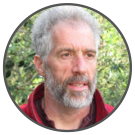
Anthony (Tony) Wexler
Director and Distinguished Professor, UC Davis Air Quality Research Center
Dr. Wexler is Director of the Air Quality Research Center at and Distinguished Professor in Mechanical and Aerospace Engineering, Civil and Environmental Engineering, and Land, Air and Water Resources at UC Davis. His research efforts center on aerosol dynamics in the atmosphere and their health effects employing theoretical, modeling, and observational approaches.
Principle Presentation: Step-wise Hydration of Organics and Electrolytes in Atmospheric Aerosols

Forwood Wiser
PhD Student, Columbia University
Forwood Wiser is a PhD student in the McNeill Group at Columbia University, working on the EPA funded AMORE (Atmospheric MOdel REduction) project.
Principle Presentation: AMORE: Automated Mechanism Reduction in Atmospheric Chemistry

Caroline (Carrie) Womack - Invited Speaker
Research Scientist, NOAA Chemical Sciences Laboratory
Dr. Womack received her PhD in Physical Chemistry from the University of Chicago, where her research focused on internal energy partitioning in reactive radical intermediates of atmospherically-relevant gas phase reactions. She did her postdoctoral work at MIT measuring Criegee intermediates with rotational spectroscopy before joining the NOAA Chemical Sciences Laboratory as an NRC Postdoctoral Fellow in 2015. Her research there has focused on cavity-enhanced spectroscopic techniques for measuring trace gases and aerosol optical properties, with applications to wintertime urban air quality, and emissions from wildfire smoke. She has participated in the 2016 NOAA FIREX Fire Lab study, the 2017 NOAA UWFPS campaign, and the 2019 NASA-NOAA FIREX-AQ campaign.
Principle Presentation: Wintertime aerosol formation in mountain basins

Xiaokai Yang
Graduate Research Assistant, Civil and Environmental Engineering, University of Illinois at Urbana Champaign
Xiaokai Yang is a graduate research assistant at department of Civil & Environmental Engineering, University of Illinois at Urbana Champaign. He is working on air quality modelling in Dr. Tessum's research group. He received his master's degree in Environmental Science and Engineering from UIUC.
Principle Presentation: Multi-phase chemistry surrogate modeling with elemental mass conservation using a Neural ODE

Yuliia Yukhymchuk
PhD Student, Institute of Physics of the National Academy of Sciences of Ukraine. Engineer in the Department for Atmospheric Optics and Instrumentation, Main Astronomical Observatory of the National Academy of Sciences of Ukraine
Yuliia Yukhymchuk is a 4th-year PhD student. The main area of interest is atmospheric aerosol and its characteristics. The current thesis topic focused on changes and the impact of different aerosol types on radiative forcing and the climate of the atmosphere in Ukraine. Also, she had experience at international internships in France, participation in international and Ukrainian conferences
Lightning Talk Presentation: Pollution in Kyiv by PM 2.5 and 10 during 2020-2021 years: characteristics, and distribution by districts

Rahul Zaveri - Invited Speaker
Earth Scientist, Pacific Northwest National Laboratory
Rahul Zaveri is a senior scientist in the Atmospheric Sciences & Global Change Division at the Pacific Northwest National Laboratory (PNNL). His primary interest is in the development and application of computer models of atmospheric trace gases and aerosols to understand their impacts on clouds and climate. Since joining PNNL in 1998, he has participated in or led several field, laboratory, and modeling studies. His current research focuses on secondary organic aerosol formation, aerosol growth dynamics, thermodynamics, multiphase chemistry, mixing state, and their effects on optical and cloud condensation nuclei activation properties. Rahul holds a B.S. from the University of Mumbai, an M.S. from the University of Kentucky, and a Ph.D. from Virginia Tech, all in Chemical Engineering.
Principle Presentation: Modeling Size-distributed Dynamic SOA Partitioning

Chenchong Zhang
Ph.D. Candidate, Washington University in St. Louis
Chenchong Zhang is a 5th-year Ph.D. student. His research interests include characterization of particle morphologies, single particle optical properties, and atmospheric radiative transfer phenomena.
Principle Presentation: Implementation of FIREX-AQ measured optical properties in WRF-Chem for estimations of secondary organic aerosol formation
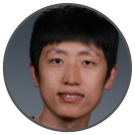
Kai Zhang
Scientist, Pacific Northwest National Laboratory
Kai Zhang's research addresses the treatment and understanding of aerosol and cloud microphysics in the global aerosol-climate model system. His current research focuses on: a) global aerosol modeling ; b) assessing the aerosol indirect effect through ice and mixed- phase clouds; c) understanding the role of aerosols and clouds on the global water and energy cycle.
Principle Presentation: Intercomparison of aerosol microphysics parameterizations in the MAM aerosol box model

Qiang Zhang - Invited Speaker
Professor, Department of Earth System Science, Tsinghua University
Qiang Zhang is professor at Department of Earth System Science, Tsinghua University. He received his Ph.D. in environmental science and engineering from Tsinghua University in 2006. From 2006-2009, he worked at Argonne National Laboratory as a postdoc. His research interests include regional air pollution and health impact, development of global and regional emission database, emission mitigation from global infrastructure, and co-benefits of air pollution control and GHG mitigation. The emission datasets he developed have been widely used in scientific community. He is the co-editor of Atmospheric Chemistry and Physics and Journal of Geophysical Research Atmosphere.
Principle Presentation: Pathways of China's PM2.5 air quality 2015-2060 in the context of carbon neutrality

Bin Zhao - Invited Speaker
Assistant Professor, School of Environment, Tsinghua University
Bin Zhao is an Assistant Professor at School of Environment, Tsinghua University. He received his B.S. and Ph.D. degrees from Tsinghua University in 2010 and 2015, respectively. He worked as a postdoctoral scholar and Assistant Researcher at the University of California, Los Angeles during 2015–2019 and subsequently worked as an Earth Scientist at Pacific Northwest National Laboratory during 2019–June 2021.
His research focuses on the formation mechanisms and control strategies of aerosol pollution, and the interactions between aerosols, clouds, and climate. He has published over 100 peer-reviewed journal papers, which have received over 4600 citations in Google Scholar. He is serving as an Associate Editor for Geophysical Research Letters, Journal of Geophysical Research - Atmospheres and Frontiers in Environmental Science.
Principle Presentation: Simulating new-particle formation and the impact on cloud condensation nuclei in pristine and polluted environments of the Amazon

Zhonghua Zheng
Postdoctoral Research Scientist, Columbia University and University of Illinois at Urbana-Champaign
Dr. Zhonghua Zheng is a Postdoctoral Research Scientist at Lamont-Doherty Earth Observatory of Columbia University, working with Prof. Arlene M. Fiore and Prof. Daniel M. Westervelt. He received his Ph.D. degree in Environmental Engineering in Civil Engineering with a concentration in Computational Science and Engineering at the University of Illinois at Urbana-Champaign in December 2020, under the supervision of Prof. Nicole Riemer and Prof. Lei Zhao. He is an incoming Advanced Study Program (ASP) Postdoctoral Fellow at National Center for Atmospheric Research (NCAR) and an invited participant in the Atmospheric Chemistry Colloquium for Emerging Senior Scientists (ACCESS XVI).
Principle Presentation: Quantifying the structural uncertainty of the aerosol mixing state representation in MAM4

Andreas (Andi) Zuend
Associate Professor, McGill University
Andi Zuend is an Associate Professor in the Department of Atmospheric & Oceanic Sciences at McGill University in Montreal. His groups' research focuses on thermodynamic and kinetic modeling of aerosol particles, with a special emphasis on thermodynamic mixing behavior, gas--particle partitioning and the conversion from detailed to reduced-complexity model representations.
Principle Presentation: Automatic 2-D component classification and lumping for gas-particle partitioning computations